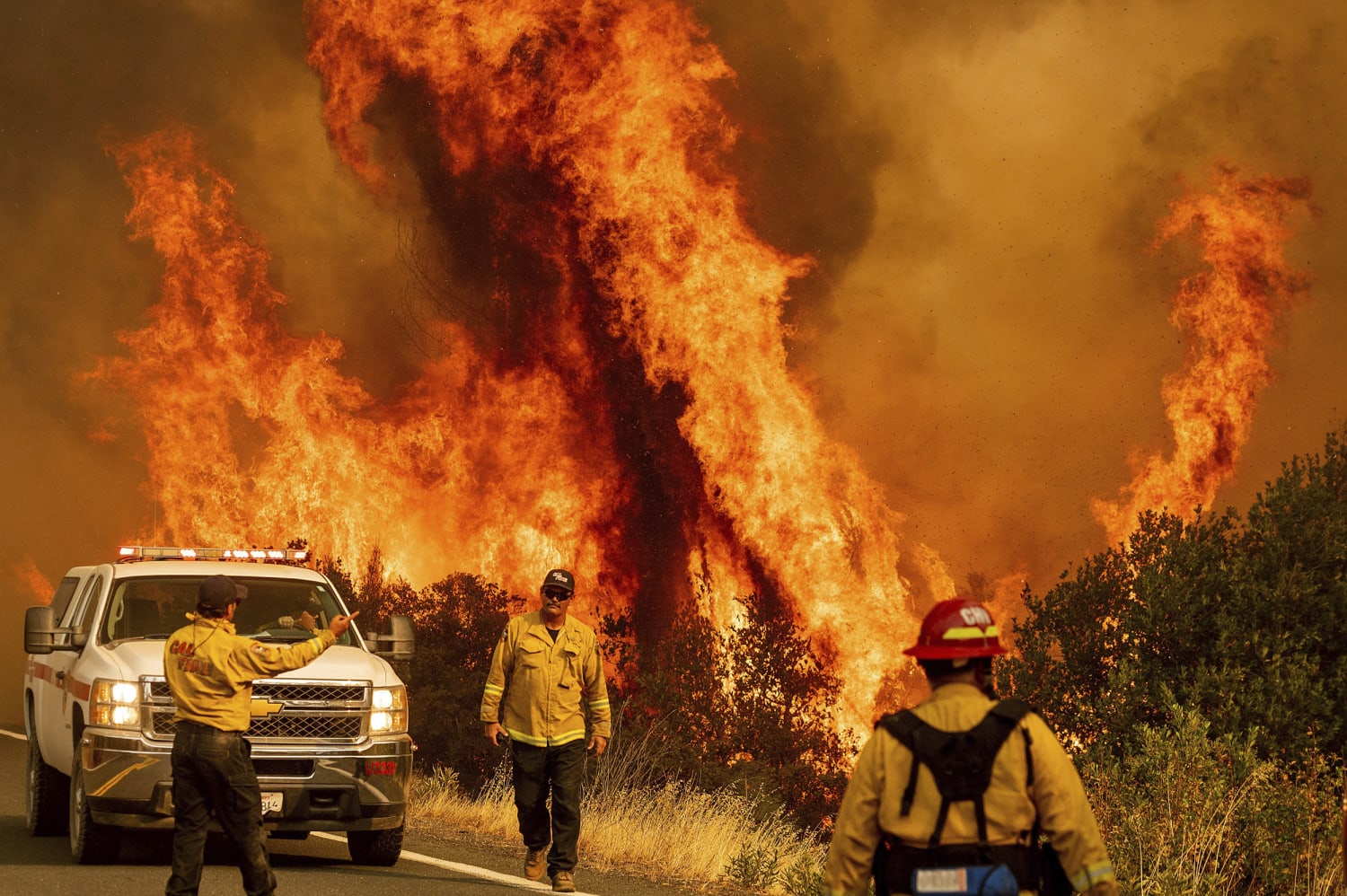Explosive California wildfires could burn into December
LOS ANGELES — Smoke from California’s wildfires choked people on the East Coast. Flames wiped out a gold rush-era town. Ash covers areas that would dwarf Rhode Island. Images of homes engulfed in flames and mountains glowing like lava would make it easy to conclude the Golden State is a charred black landscape. That’s hardly the case, but the frightening reality is that the worst may come. California has already surpassed the acreage burned at this point last year, which ended up setting the record. Now it’s entering a period when powerful winds have often driven the deadliest blazes.
“Here we are — it’s not the end of August, and the size and distribution and the destruction of summer 2021 wildfires do not bode well for the next months,” said Bill Deverell, a University of Southern California history professor. He teaches about fire in the West. “The suggestion of patterns across the last two decades in the West is deeply unsettling and worrisome: hotter, bigger, more fires.”

More than a dozen large wildfires are burning in California grass, brush, and forest that is exceptionally dry from two years of drought likely exacerbated by climate change. The fires, mainly in the northern part of the state, have burned nearly 1.5 million acres, or roughly 2,300 square miles (6,000 square kilometers). Firefighters are witnessing extreme fire behavior as embers carried miles by gusts ignite vegetation ripe for burning in rugged landscapes, where it’s hard to attack or build a perimeter to prevent it from spreading. Fires that in the past would cool down at night are sometimes surging miles in the dark.
The Dixie Fire, the largest currently burning and second-biggest on record, wiped out the historic town of Greenville and continues to threaten thousands of homes about 175 miles (282 kilometers) northeast of San Francisco. The Caldor Fire, burning about 100 miles (161 kilometers) to the south, blew up on Aug. 14, torched parts of the hamlet of Grizzly Flat, and is chewing through dense forest. Gusts and low humidity in the forecast that could vastly expand the blaze led to the closure Friday of a 40-mile (64 kilometers) stretch of highway that runs along the fire’s perimeter and links Sacramento to Lake Tahoe.
A fire 60 years ago that torched 100 homes and killed two people near Yosemite National Park once had the record for fastest expansion, covering nearly 31 square miles (80 square kilometers) in two hours. But that kind of spread is becoming more common today. John Hawkins, retired fire chief for the state and now wildland fire consultant, said he hadn’t seen such explosive fire behavior in 58 fire seasons. “The Harlow Fire of 1961 was one of a kind in its day,” Hawkins said. “As we draw a comparison today, it’s not one of a kind; it’s one after another. Something has changed.”




